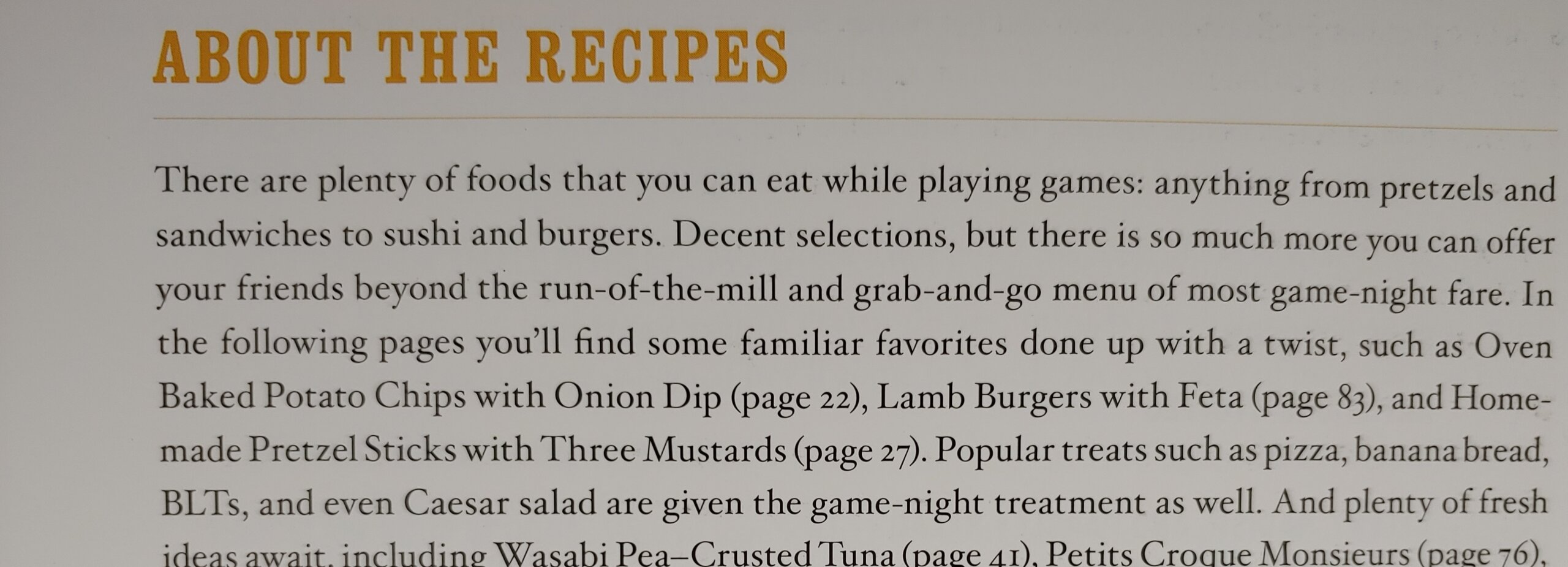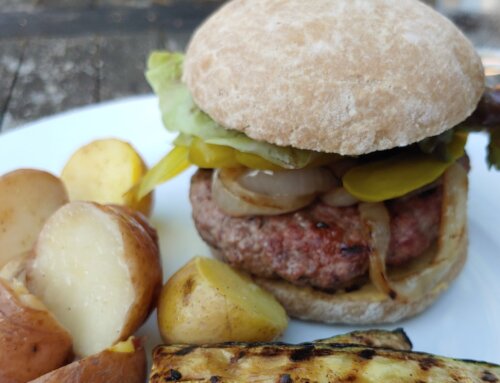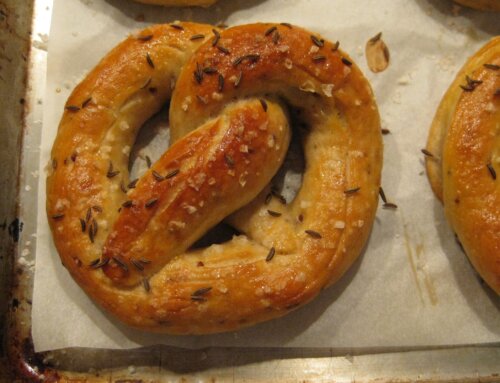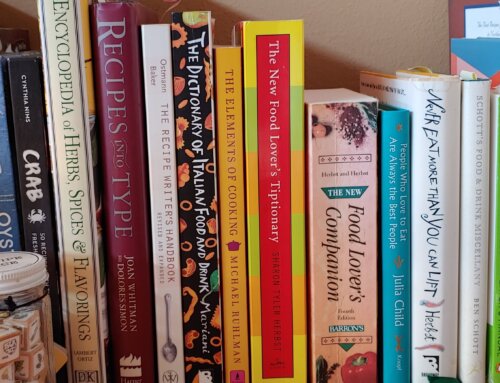My intent with this (more or less) weekly series is to remain pretty laser-focused on the craft of writing recipes: thoughts on, and suggestions for, ways to express all the valuable recipe details in a way that ensures success for the home cook. Or at least makes a valiant attempt to do so.
Here I take a brief departure, with a topic not about recipes themselves. But about “About the Recipes,” and variations on the theme. This is an element that’s often included in a cookbook’s front matter (that is, introduction and other content before recipe chapters begin). It’s a chance for the author to share some sort of overview or preface to the recipe content. Primarily informational and practical, they are. Usually. And while typically the domain of cookbooks, I think for any source or platform with a sizeable collection of recipes that folks may return to regularly, it is a good tool to provide. These insights that can enrich the cook’s experience with the recipes.
In my own cookbooks, I’ve varied the “about” approach depending on the book’s focus. For Gourmet Game Night, I gave readers a heads-up about my goal with the recipes that follow: adding to the repertoire of common informal game-night fare by embellishing other dinner party favorites to be game-play friendly. I also addressed the fact that the yield in this book would be a bit different–by the count made rather than servings–contradicting what I had noted about yield in this post. Game-night menu planning craves flexibility.
For my Wild Mushrooms cookbook, I addressed the range of varieties and the unpredictable availability of wild mushrooms, and how readers can adapt recipes based on what’s available to them at the time. In Crab it was a similar approach, discussing different forms and species of crab and what to expect in terms of options when they get to the recipes.
The ever-wonderful Dorie Greenspan in her Around My French Table captures the divide that can crop up between recipe writer’s work and the experience cooks will have in their own kitchens. She addresses the hard reality that no matter how diligent any recipe writer is, “there’s no way I could take into account all the individual variables that will turn up in your kitchen.” With that she lets readers know that there will be judgment calls they’ll need to make—and reassures them that they should trust their judgment. Typical Dorie encouragement.
A week or so ago, I picked up a copy of The Book of Difficult Fruit. I just can’t get over that book, with its most interesting triad of botanical-culinary-memoir genre. This collection of stand-alone but intertwined essays—aronia to zucchini—was intriguing. It’s a beautiful piece of nonfiction with recipes, not a cookbook by traditional measures.
Perhaps, then, it’s natural that Kate Lebo’s “A Note on Recipes” entry is a bit of a departure too. Sure, it does still nod to the practical, including mention of some of her recommended kitchen tools. But Lebo’s opening sentence struck me with its thoughtful, matter-of-fact statement. “Recipes are rituals that promise transformation,” she begins.
Promise. Transformation. Ritual. Introducing readers to her recipes with such evocative, rich terms is a proper clue that what’s to come is likely no mundane recitation of ingredients and technique. And this couple pages of recipe-related commentary ends even more perfectly. “In essence, these recipes are invitations,” Lebo writes, beckoning the reader with, “Try this at home.”
Even in the world of books alone, recipes take on different character to suit the project, the context, the audience and the recipe’s source, whether that’s an individual, an organization or a commercial enterprise. Beyond books—web sites, newsletters, packaging, in-store handouts, and more—the shifting possibilities of recipes’ potential character and style are even more pronounced.
As that character, voice and approach varies with recipes themselves based on many considerations, so can—and should—any “about” content that lays the groundwork for them. A lovely reminder about how much room there is to invoke distinct perspective a great many ways in the world of the recipe.




